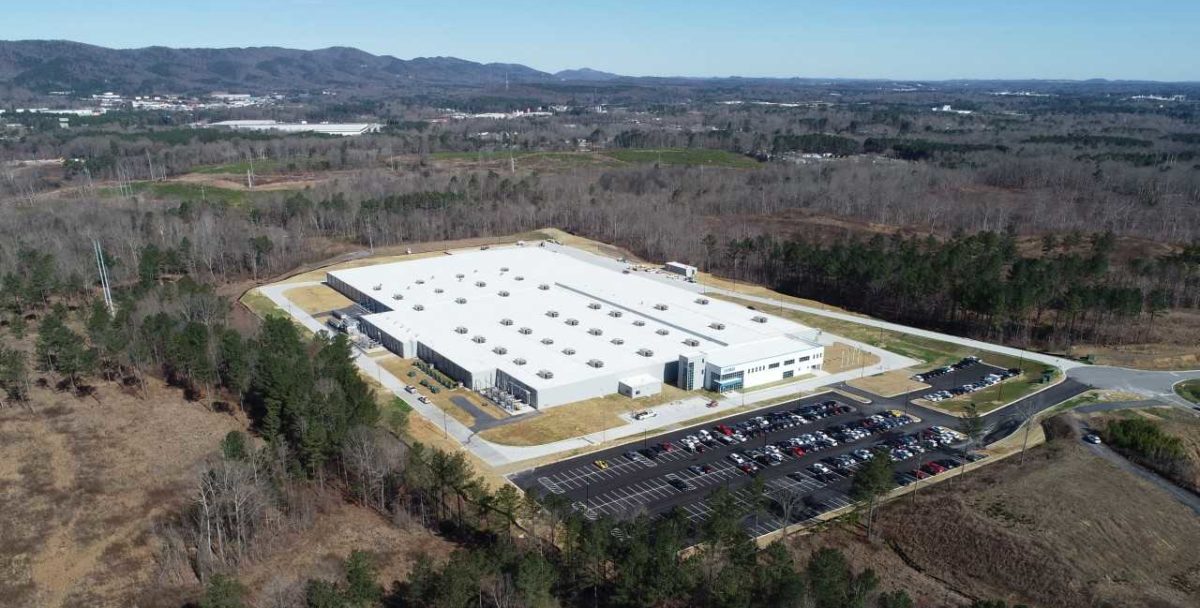In what is being called the largest investment in U.S. solar history, Qcells announced that it will invest more than $2.5 billion to build a complete solar supply chain in the United States. This makes the Korean company, a subsidiary of Hanwha Solutions, the first company to establish a fully-integrated silicon-based solar supply chain in the U.S.
“Today’s Hanwha Q CELLS announcement to make the largest solar investment in U.S. history is a big deal for Georgia’s working families and the American economy. And, this investment is a direct result of my economic plan and the Inflation Reduction Act,” said President Biden.
Qcells intends to break break ground on the new, state-of-the-art facility in Bartow County, Georgia, where it will manufacture 3.3 GW of solar ingots, wafers, cells and finished modules. The company also has a facility in Dalton, Georgia, where it will assemble an additional 2 GW of modules. With plans to boost the Dalton production by another 5.1 GW, Qcells anticipates that its total production in Georgia will be 8.4 GW in 2024.
The announcement was made by Qcells’ parent company, Hanwha Solutions, a public company headquartered in Seoul, South Korea.
“As demand for clean energy continues to grow nationally, we’re ready to put thousands of people to work creating fully American Made and sustainable solar solutions, from raw material to finished panels,” said Justin Lee, chief executive officer of Qcells. “We are committed to working with our customers as well as national and Georgia state leaders to bring completely clean energy to millions of people across the country.”
Qcells is no stranger to Georgia, having opened its first factory there in 2019. At the time it hired 750 people to manufacture 1.7 GW of solar. In 2022, it announced a plan to add 1.4 GW to its manufacturing output and hire 535 more people. Today’s announcement means Qcells will hire an additional 510 people in Dalton, bringing Qcells’ total employment in Georgia to 4,000 and accumulated investment in the state to $2.8 billion.
Hanwha’s Q CELLS investment will create thousands of good-paying jobs in Georgia, many of which won’t require a four-year degree. It will bring back our supply chains so we aren’t reliant on other countries, lower the cost of clean energy, and help us combat the climate crisis. And, it will ensure that we manufacture cutting-edge, solar technology here at home. It’s a win for workers, consumers, and our climate, said President Biden.
Qcells cites Senator Ossoff’s Solar Energy Manufacturing for America Act, now part of the Inflation Reduction Act, as playing a key role in promoting additional investments in the U.S. The IRA offers numerous tax credits for clean energy manufacturing.
“We are proud to announce our new solar module manufacturing plant will be in Dalton, Georgia. Nobody has been a bigger champion for Qcells and domestic solar manufacturing than Senator Ossoff,” said Lee.
As of Q3 22, Qcells had been a top player in the U.S. solar market for the past five years, according to the Q4 22 U.S. PV Leaderboard report from Wood Mackenzie. Additionally it has been the leading module provider for the U.S. commercial sector since 2019. Today’s announcement, however, is about much more than modules. Qcells plans to thwart the solar supply chain challenges that are currently stalling development by producing ingots, wafers and cells—as well as modules.
Qcells is already involved in the production of silicon. In March 2022, parent company Hanwha Solutions became the largest shareholder in REC Silicon, a silicon producer located in Moses Lake, Washington. That facility is expected to start production in the second half of 2023.
Back in March 2022, Lee hinted at the company’s intention to manufacture across the solar supply chain.
“Our commitment to the U.S. is more serious than ever before,” Lee said. “We plan to make investments to secure capabilities across the entire solar supply chain, with the goal of supplying our partners with ‘Made in America’ products that will help the U.S. regain its leadership in clean energy solutions.”
This content is protected by copyright and may not be reused. If you want to cooperate with us and would like to reuse some of our content, please contact: editors@pv-magazine.com.









By submitting this form you agree to pv magazine using your data for the purposes of publishing your comment.
Your personal data will only be disclosed or otherwise transmitted to third parties for the purposes of spam filtering or if this is necessary for technical maintenance of the website. Any other transfer to third parties will not take place unless this is justified on the basis of applicable data protection regulations or if pv magazine is legally obliged to do so.
You may revoke this consent at any time with effect for the future, in which case your personal data will be deleted immediately. Otherwise, your data will be deleted if pv magazine has processed your request or the purpose of data storage is fulfilled.
Further information on data privacy can be found in our Data Protection Policy.